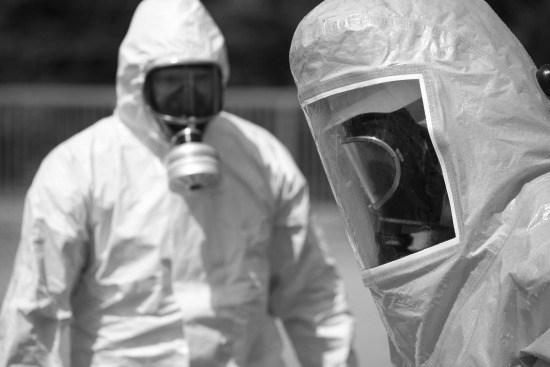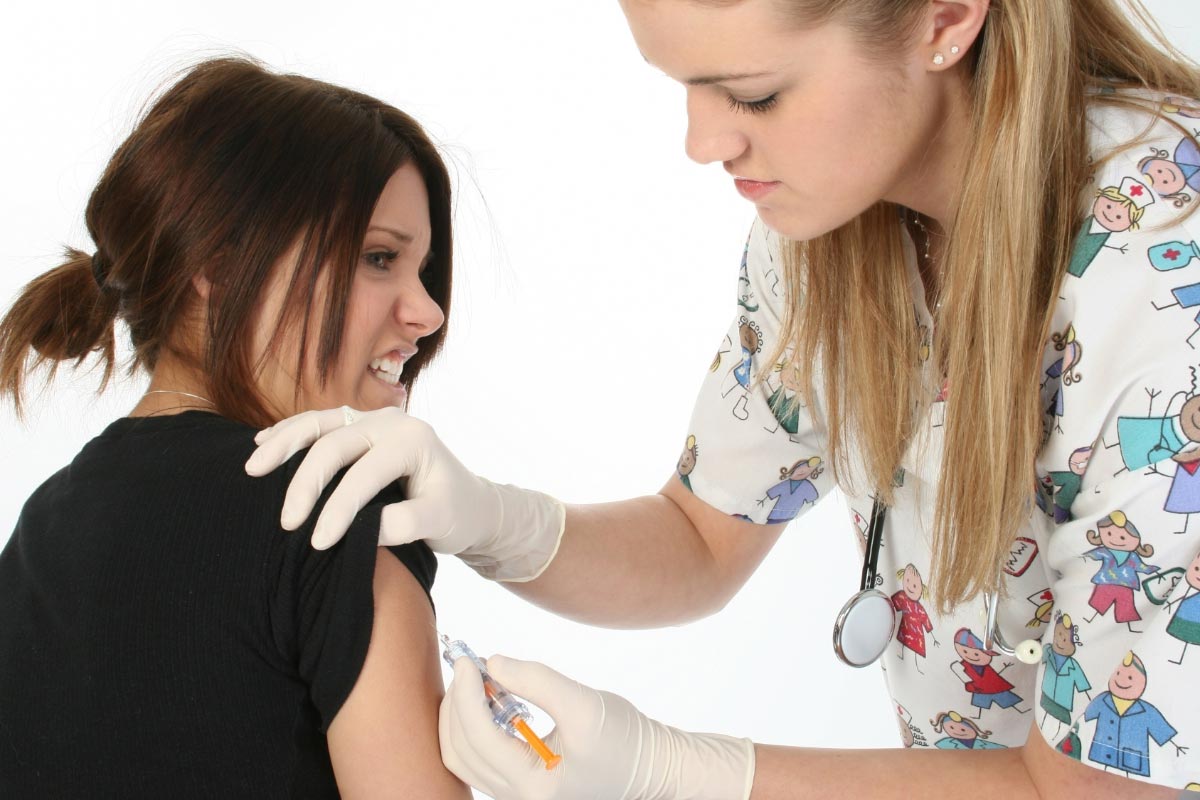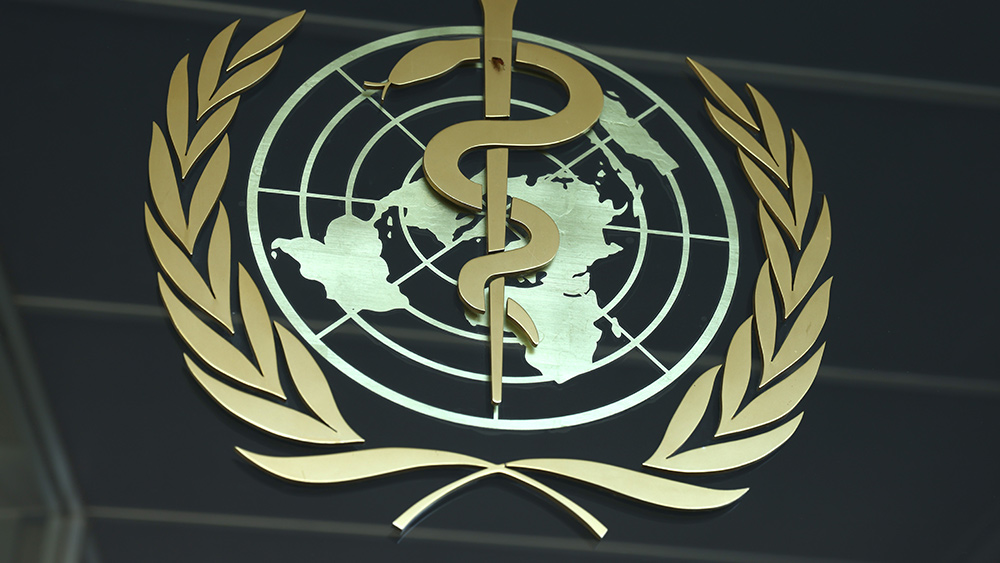Are We Due for a Pandemic Flu? Here’s How to Prepare Just in Case
by Lisa Egan, Ready Nutrition:
 It has been 100 years since the Spanish Flu (also known as the 1918 flu pandemic) spread across the globe, infecting 500 million people and causing the deaths of 50 million – which was three to five percent of the world’s population at the time.
It has been 100 years since the Spanish Flu (also known as the 1918 flu pandemic) spread across the globe, infecting 500 million people and causing the deaths of 50 million – which was three to five percent of the world’s population at the time.
Imagine the catastrophic numbers in today’s time if a similar flu hit – and how quickly it would spread from the ease in transportation modern society allows.
While you can rest easy right now knowing a global pandemic is not currently a threat, it is just a matter of time before the next one arrives.
Although modern medicine has a lot more flu-fighting tricks in its arsenal than it did several decades ago, the risk of a pandemic flu killing many is still very real.
The growing population, ease in global travel, civil conflict, a marked decrease in medical facilities in outbreak regions, and a decrease in CDC resources could all create a perfect storm for an epidemic to rapidly get out of control and become a pandemic.
In The Big One Is Coming, and It’s Going to Be a Flu Pandemic, Dr. Sanjay Gupta wrote that when a highly lethal flu pandemic comes, it will affect everyone alive today:
Pandemic flu is apolitical and does not discriminate between rich and poor. Geographical boundaries are meaningless, and it can circle the globe within hours.
Dr. Gupta goes on to explain that when most people hear “flu”, they think of seasonal flu, but pandemic flu is “a different animal, and you should understand the difference.”
Panˈdemik/: pan means “all”; demic (or demographic) means “people.” It is well-named, because pandemic flu spreads easily throughout the world. Unlike seasonal flu, pandemics occur when a completely new or novel virus emerges. This sort of virus can emerge directly from animal reservoirs or be the result of a dramatic series of mutations — so-called reassortment events — in previously circulating viruses.
In either case, the result is something mankind has never seen before: a pathogen that can spread easily from person to defenseless person, our immune systems never primed to launch any sort of defense.
While outbreaks of deadly exotic diseases like Ebola get a lot of attention in the press and are a terrifying prospect, viruses like it (and Zika) are not likely to cause a global catastrophe. That’s because the method of transmission is much slower and complex – Ebola and Zika are mainly spread via bodily fluids and mosquitoes, respectively.
A recent study on naturally occurring microorganisms that constitute a global catastrophic biological risk (GCBR) was conducted by the Johns Hopkins Center for Health Security, and a report on the findings was published earlier this year.
You may be wondering what exactly a “GCBR” is. The report explains:
GCBRs are defined as “those events in which biological agents—whether naturally emerging or reemerging, deliberately created and released, or laboratory engineered and escaped—could lead to sudden, extraordinary, widespread disaster beyond the collective capability of national and international governments and the private sector to control. If unchecked, GCBRs would lead to great suffering, loss of life, and sustained damage to national governments, international relationships, economies, societal stability, or global security.”
Although most classes of microbe could evolve or be manipulated in ways that would cause a catastrophic risk to humans, viruses are the most likely class of microorganism to have this ability.
“We need to get serious about respiratory viruses,” said Dr. Amesh Adalja, a senior scholar at the Johns Hopkins Center for Health Security in Baltimore, who led the research.
[There’s] a lot of focus on diseases that aren’t going to be able to change civilization in a way that something that’s spread through the respiratory route would be.”
The study found that in addition to being airborne, pathogens with the potential to cause a global disaster would probably have the following traits, reports Live Science:
- It would be contagious during the “incubation period,” before people show any symptoms, or when people have only mild symptoms.
- It would be a microbe that most people are not immune to, so there would be a large population of susceptible human hosts.
- It wouldn’t have an existing treatment or prevention method.
- It would have a “low but significant” fatality rate.
If the last trait in that list caused you to feel a little relieved, well…don’t get too comfortable: Dr. Adalja told Live Science that a pathogen doesn’t have to have a high fatality rate, or kill the majority of people infected, to cause majority societal disruptions. “It just has to make a lot of people sick,” he said. Pathogens with high fatality rates often kill people too fast to have a chance to infect a lot of new hosts and become a widespread problem.
The researchers found that within the viral class, a group known as RNA viruses have the most potential to cause a global pandemic of disastrous proportions. In part, this is because these viruses mutate more easily than other types do. Well-known viruses such as the flu, SARS, common cold viruses (like enteroviruses and rhinoviruses), and respiratory syncytial virus (RSV) are RNA viruses.
The Importance of Being Prepared for a Pandemic Flu
 In “The Prepper’s Blueprint” pandemic preparedness is a vital part of emergency preparedness and health officials believe this could happen again.
In “The Prepper’s Blueprint” pandemic preparedness is a vital part of emergency preparedness and health officials believe this could happen again.
“Since pandemics are fast moving, vaccinations would be useless. When an outbreak occurs, those living in cities, and those living in close proximity to others will be more at risk. Statistics from previous pandemics indicate that 30–60 percent of the population will contract an illness. Any pregnant women, infants, elderly people, or those with chronic medical conditions are also at risk and could be the first of the population to contract the contagious illness. When the pandemic begins, many will remain in a state of denial about any approaching epidemics and not want to think of the long-lasting repercussions of such a disaster. Being prepared before the mass come out of their daze will ensure that you are better prepared before the hoards run to the store to stock up. Having first-hand knowledge of the government’s protocols before this type of emergency arises can help put you ahead of the game. Understanding that our lives will change drastically if the population is faced with a pandemic and being prepared for this can help you make better choices toward the well being of your family. Some changes could be:
- Challenges or shutdowns of business commerce
- Breakdown of our basic infrastructure: communications, mass transportation, supply chains
- Payroll service interruptions
- Staffing shortages in hospitals and medical clinics
- Interruptions in public facilities – Schools, workplaces may close, and public gatherings such as sporting events or worship services may close temporarily.
- Government mandated voluntary or involuntary home quarantine.
As explained in the article Are You Ready Series: Pandemic Preparedness, community preparedness will play a large role in preventing the spread of an illness. The Federal Government has developed a Pandemic Severity Index that is used to assess the severity of an epidemic. If the government believes it is necessary, pandemic mitigation measures are activated.
Here are some of those measures:
- Isolation and treatment (as appropriate) with influenza antiviral medications of all persons with confirmed or probable pandemic influenza. Isolation may occur in the home or healthcare setting, depending on the severity of the individual’s illness and/or the current capacity of the healthcare infrastructure.
- Voluntary home quarantine of members of households with confirmed or probable influenza case(s) and consideration of combining this intervention with the prophylactic use of antiviral medications, providing sufficient quantities of effective medications exist and that a feasible means of distributing them is in place.
- Dismissal of students from schools (including public and private schools as well as colleges and universities) and school-based activities and closure of childcare programs, coupled with protecting children and teenagers through social distancing in the community to achieve reductions of out-of-school social contacts and community mixing.
- Use of social distancing measures to reduce contact between adults in the community and workplace, including, for example, cancellation of large public gatherings and alteration of workplace environments and schedules to decrease social density and preserve a healthy workplace to the greatest extent possible without disrupting essential services. Enable institution of workplace leave policies that align incentives and facilitate adherence to the nonpharmaceutical interventions (NPIs) outlined above.
Because pandemic flu spreads so quickly, and because developing and distributing a vaccination for a new flu virus usually takes at least six months, it is not likely that a vaccine would offer many benefits. And, it is unlikely that seasonal flu vaccines would be of any use for a pandemic flu virus because they are not designed to protect against new influenza A viruses. Seasonal flu vaccines do not have a good track record as it is; the shot’s effectiveness for the 2017-2018 flu season was an estimated 36%.
How YOU Can Prepare for a Pandemic Flu
Preparing for a pandemic is a lot more difficult than preparing for a typical flu season, but there are things you can do to try to avoid infection and manage it if it does threaten your community.
With any type of disaster or emergency, the responsibility falls more heavily upon our shoulders to ensure that we are able to meet our needs. Self-reliance is key in this type of disaster because you will not want to venture into town or come in contact with the public.
So how do we prepare properly for this type of emergency?
Taking proper illness precautions is crucial:
- Make a point to avoid those who may be infected
- Avoid touching your mouth, nose, and eyes during any pandemic
- Cover coughs and sneezes with a tissue
- Wash hands often
- Clean frequently touched surfaces and objects
- Wear a face-mask when sick and in close contact with other people
Here are a few more ideas to consider on how to better prepare your family for this type of emergency:
- Create a sick room for the home.
- Keep your immune systems up by getting lots of sleep, having a good diet, exercising and taking vitamins and antioxidants to protect your health.
- Stay inside and avoid contact with others.
- Get pandemic supplies to have on hand at a moment’s notice.
Prepare Your Body: Boost Your Immune System
Boosting your immune system can help you avoid becoming sick, or reduce the severity of illness should you become infected.
Read More @ ReadyNutrition.com
Loading...



